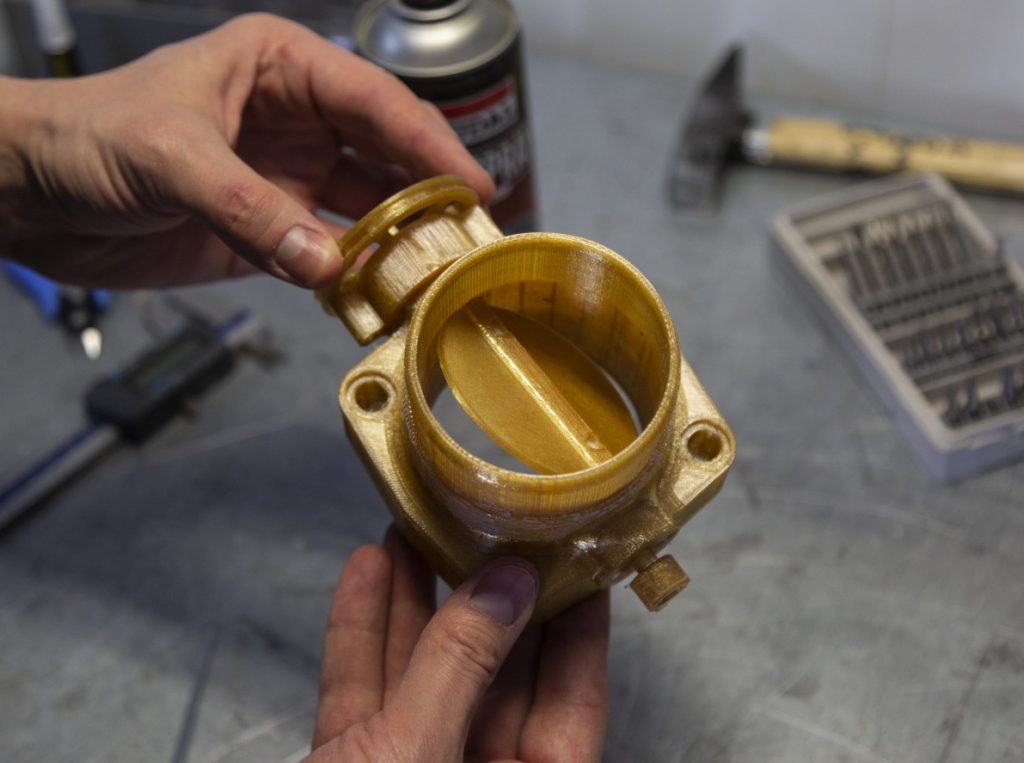Polish 3D printer manufacturer Zortrax has announced the launch of a new filament in addition to widened material compatibility for its industrial Endureal machine.
Dubbed ‘Z-PEI 1010,’ Zortrax’s latest material is a polyetherimide (PEI) blend, that teams ultra-high mechanical strength with heat and chemical resistance. When used with the Endureal, the polymer is said to be capable of yielding parts with alloy-like properties, lending it potential applications within the automotive, aerospace and chemical industries.
“Introducing Z-PEI 1010 is the next logical step in a wider process of pushing the Endureal’s capabilities even further in advanced 3D printing applications,” commented Marta Shalima, Business Development Director at Zortrax.

Zortrax’s 3D printing portfolio
Based in Poland, Zortrax specializes in the development of desktop 3D printers, as well as related post-processing, materials and software products. Thanks to its network of over 130 partners, the firm has been able to address the needs of clients ranging from the medicine to architecture sectors, but it has recently sought to target heavier-duty applications.
In 2019, Zortrax launched its Endureal 3D printer, which is specifically designed for working with challenging temperature-resistant materials such as PEEK, that yield robust automotive and aerospace parts. Powered by the company’s Layer Plastic Deposition Plus (LPD Plus) technology, the machine’s extruders feature enhanced heat shielding, enabling them to create parts with low thermal conductivity levels.
Leveraging its Endureal system, Zortrax partnered with the European Space Agency (ESA) in October last year to 3D print conductive combined PEEK prototypes, with electricity and data transferring capabilities. The R&D advance yielded a novel PEEK blend that could, in future, allow the firm’s systems to be used to create smart components with built-in circuits.
Zortrax has also targeted industrial applications with its other Inkspire UV LCD 3D printer, by supplementing it with a new line of robust engineering resins. The firm’s impact-resistant Resin Tough range is designed for use within both rapid prototyping and end-use applications, such as the creation of optical research devices and industrial tooling.

Introducing the Z-PEI 1010
Designed to further enhance the Endureal’s potential within the aerospace and industrial sectors, the Z-PEI 1010 is characterized by high levels of heat and chemical resistance. The new filament is capable of heat deflection at temperatures of up to 208°C, in addition to maintaining strong thermal stability, even when deployed in ultra-hot or extremely cold conditions.
Thanks to the material’s robust resistance qualities, it’s also able to be exposed to automotive fluids and lubricants, or the halogenated hydrocarbons used during metal cleaning, without reacting. As a result, the filament has potential within piping applications, as it’s capable of safely transporting chemicals without causing cross-contamination.
When it comes to parts produced using Z-PEI 1010, they’re said to feature high levels of rigidity, meaning that they’re likely to break rather than bend once exposed to critical stress levels. Such properties make it ideal for 3D printing electronics housings, load-bearing parts or assembly jigs, thus the material effectively serves to expand on the Endureal’s industrial applications.
Expanding the Z-SUITE
In addition to the launch of its new Z-PEI 1010 material, Zortrax has also built on the capabilities of its Endureal 3D printer via an upgrade to its proprietary Z-SUITE software. The program provides users with design optimization, slicing and print management tools, and following a recent update, it now features enhanced third party material support.
For more experienced manufacturers, these external printing profiles allow them to use various PEI-based polymers, to reinforce Zortrax’s PEI 9085 or PEI 1010 filaments. Following the Z-SUITE update, users can also go to its External Materials section, and adjust their system’s baseline settings to match manufacturer recommendations.
The same procedure can be applied to various other ABS materials as well, and according to Shalima, the Endureal’s newly-broadened compatibility will now enable adopters to utilize a wider range of high-performance polymers.
“Offering fine-tuned printing profiles for dedicated filaments is one thing, and leaving engineers and other professional users with freedom to choose the right materials for their specific applications is quite another,” said Shalima. “To achieve that, we are also opening the Endureal to external high-performance polymers based on most commonly used blends of PEI.”
To stay up to date with the latest 3D printing news, don’t forget to subscribe to the 3D Printing Industry newsletter or follow us on Twitter or liking our page on Facebook.
Are you looking for a job in the additive manufacturing industry? Visit 3D Printing Jobs for a selection of roles in the industry.
Featured image shows Zortrax’s Endureal 3D printer alongside some parts produced using the new Z-PEI 1010 filament. Photo via Zortrax.



